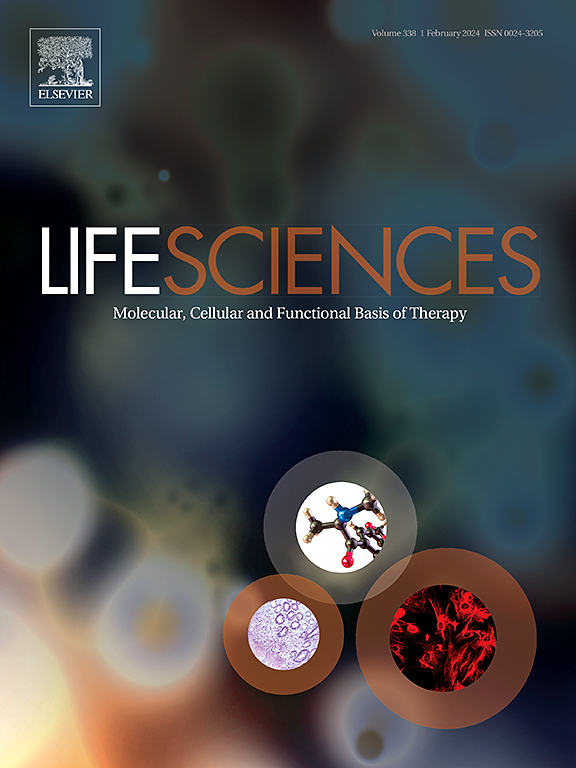Rab26-mediated lysosomal translocation of eEF1A alleviates myocardial hypertrophy and cardiac remodeling
IF 5.1
2区 医学
Q1 MEDICINE, RESEARCH & EXPERIMENTAL
引用次数: 0
Abstract
Backgrounds
Pathological myocardial hypertrophy and cardiac remodeling are a maladaptive response to stressors such as hypertension and genetic mutations, characterized by cardiomyocyte enlargement, fibrosis, cardiomyocyte apoptosis and impaired cardiac function. Rab26, a small GTPase, plays a crucial role in vesicle trafficking, secretion and apoptosis. However, its role in myocardial hypertrophy and cardiac remodeling remains unclear.
Methods
Transverse aortic constriction (TAC) model was employed to induce myocardial hypertrophy and cardiac remodeling, with functional and histological assessments. Cardiac-specific Rab26 overexpression was achieved via AAV9-cTnT-Rab26 delivery, while Rab26 knockout was used for loss-of-function analysis. Molecular mechanisms were explored using protein interaction studies, fluorescence co-localization, and protease inhibition assays.
Results
Our findings indicated a significant downregulation of Rab26 protein expression in the disease model, while its mRNA levels remained unaltered. Notably, cardiac-specific overexpression of Rab26 led to improved cardiac function, decreased cardiac fibrosis, suppressed myocardial hypertrophy and cardiomyocyte apoptosis. Furthermore, the knockout of Rab26 aggravated myocardial hypertrophy and cardiac remodeling. At the mechanistic level, Rab26 facilitates lysosomal translocation and degradation of eEF1A. Additionally, eEF1A silencing eliminated the protective effect of Rab26 on the heart. Comprehensive evaluation revealed the critical role of the Rab26-eEF1A axis in mediating pathological myocardial hypertrophy and cardiac remodeling.
Conclusions
This study suggests that Rab26 prevents cardiac remodeling and dysfunction under pressure overload by promoting the lysosome translocation and degradation of eEF1A. Targeting the Rab26-eEF1A axis thus provides a potential strategy for preventing or reversing myocardial hypertrophy and cardiac remodeling.
rab26介导的eEF1A溶酶体易位减轻心肌肥厚和心脏重构。
背景:病理性心肌肥大和心脏重构是对高血压和基因突变等应激源的不适应反应,以心肌细胞增大、纤维化、心肌细胞凋亡和心功能受损为特征。Rab26是一种小的GTPase,在囊泡运输、分泌和凋亡中起重要作用。然而,其在心肌肥厚和心脏重塑中的作用尚不清楚。方法:采用主动脉横缩(TAC)模型诱导心肌肥大和心肌重构,并进行功能和组织学评价。通过AAV9-cTnT-Rab26递送实现心脏特异性Rab26过表达,而Rab26敲除用于功能丧失分析。通过蛋白质相互作用研究、荧光共定位和蛋白酶抑制实验来探索分子机制。结果:我们的研究结果表明,RAB26蛋白在疾病模型中表达显著下调,而其mRNA水平保持不变。值得注意的是,心脏特异性过表达Rab26可改善心功能,减少心肌纤维化,抑制心肌肥厚和心肌细胞凋亡。此外,敲除Rab26会加重心肌肥厚和心脏重构。在机制水平上,Rab26促进了eEF1A的溶酶体易位和降解。此外,eEF1A沉默消除了Rab26对心脏的保护作用。综合评价发现Rab26-eEF1A轴在介导病理性心肌肥厚和心脏重构中具有重要作用。结论:本研究提示Rab26通过促进eEF1A溶酶体易位和降解来预防压力过载下心脏重构和功能障碍。因此,靶向Rab26-eEF1A轴提供了预防或逆转心肌肥厚和心脏重构的潜在策略。
本文章由计算机程序翻译,如有差异,请以英文原文为准。
求助全文
约1分钟内获得全文
求助全文
来源期刊

Life sciences
医学-药学
CiteScore
12.20
自引率
1.60%
发文量
841
审稿时长
6 months
期刊介绍:
Life Sciences is an international journal publishing articles that emphasize the molecular, cellular, and functional basis of therapy. The journal emphasizes the understanding of mechanism that is relevant to all aspects of human disease and translation to patients. All articles are rigorously reviewed.
The Journal favors publication of full-length papers where modern scientific technologies are used to explain molecular, cellular and physiological mechanisms. Articles that merely report observations are rarely accepted. Recommendations from the Declaration of Helsinki or NIH guidelines for care and use of laboratory animals must be adhered to. Articles should be written at a level accessible to readers who are non-specialists in the topic of the article themselves, but who are interested in the research. The Journal welcomes reviews on topics of wide interest to investigators in the life sciences. We particularly encourage submission of brief, focused reviews containing high-quality artwork and require the use of mechanistic summary diagrams.
 求助内容:
求助内容: 应助结果提醒方式:
应助结果提醒方式:


